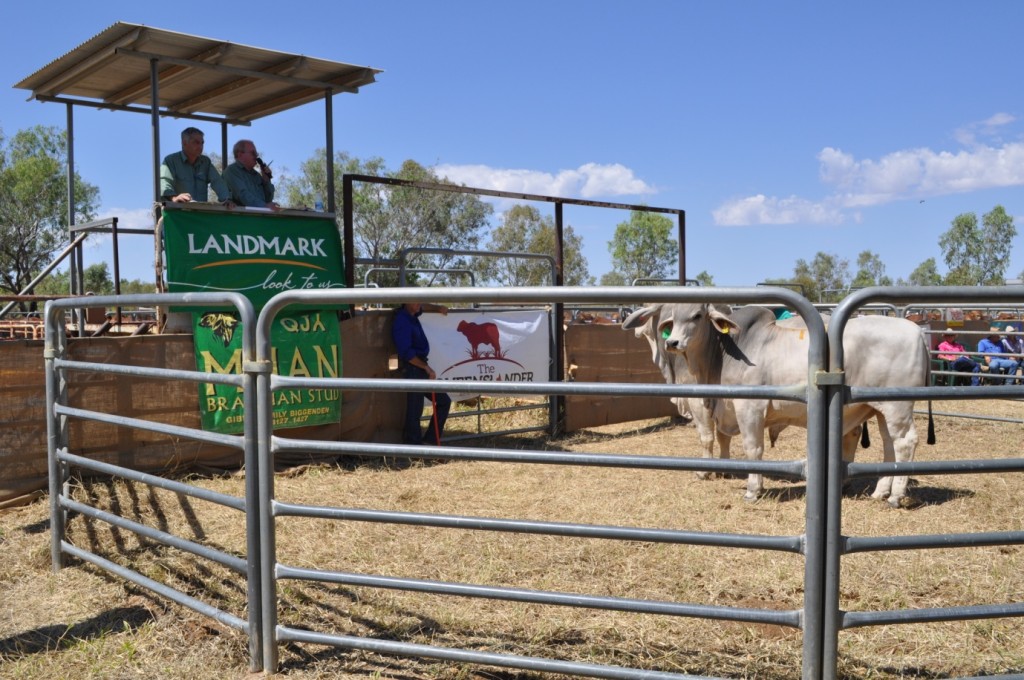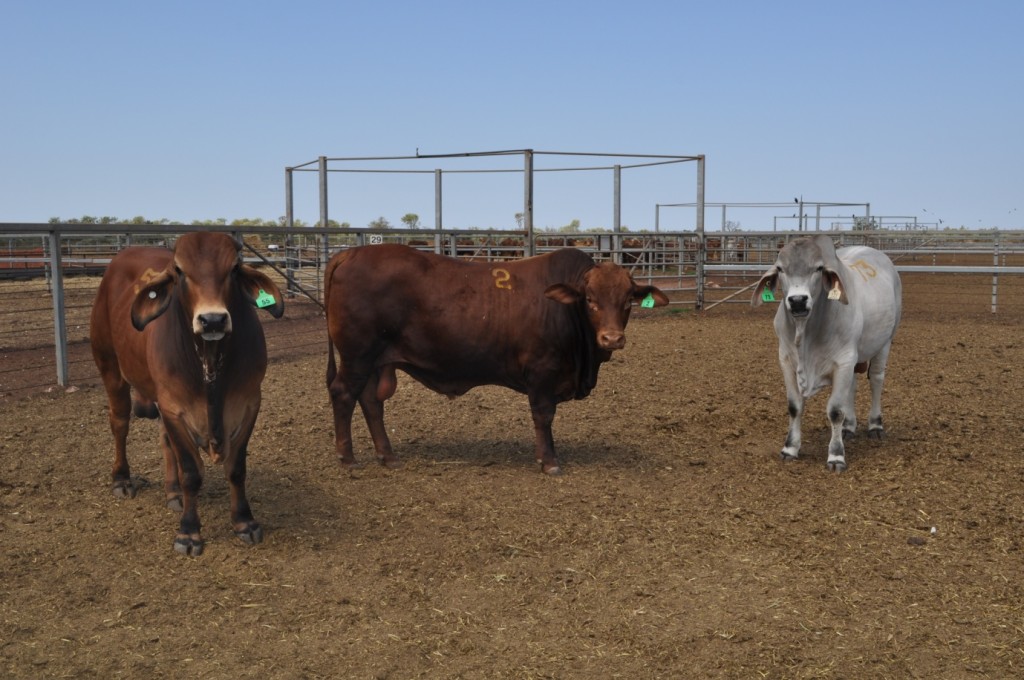Who’s your daddy?
Host: Dampier Downs Station
Written by Anne Marie Huey – Station Manager, Dampier Downs.
It’s 8 am on a Friday morning, and as I say hello to passing neighbours, friends, and acquaintances, I am busily scrutinising every pair of testicles I can see. Now, this isn’t nearly as forward as you might think, as I am at the annual Fitzroy Crossing bull sale.
In the early days, the main cattle breed in the Kimberley was Shorthorn. This is originally a British breed and, although extremely fertile, is not particularly suited to the harsher northern environment. Later, Brahmans were introduced to northern Australia as they are a much hardier breed and are better able to withstand local conditions.
Today, Brahman and Brahman Shorthorn cross are still the main breeds found in the Kimberley, although there is a lot more refinement via cross-breeding (i.e. strategically crossing Brahman cattle with other, usually ‘softer’, breeds) going on. The benefits of cross-breeding include greater fertility due to the ‘hybrid vigour’ effect and, hopefully, access to a greater range of markets.
This is because cattle with a high Brahman content are often heavily penalised by processors and retailers in Western Australia and it is therefore rarely profitable to send our cattle to southern markets. Fortunately though, our cattle are suited to a number of live export markets and that is where the majority of our animals go. At Dampier Downs, we are slowly but steadily improving our herd genetics by introducing good quality bulls and that is why we are at the sale today.
Buying bulls is serious business, as the bulls we purchase today will have a direct influence on the quality of our herd for the next fifteen years or so. There is a lot to consider – structure, temperament, and most importantly, genetic contribution to future generations.
There’s also a lot of science involved in selecting bulls. These days, a whole suite of genetic traits can be measured, along with the relative heritability of the trait. These traits can relate to carcase characteristics, fertility, and general adaptability to local conditions. These characteristics are then collated into what is known as Estimated Breeding Values (EBVs), which allows us to make objective comparisons between bulls, based on genetic potential.
As most our cattle are destined for live export markets we are most interested in fertility EBVs and there is a direct correlation between the size of a bull’s testicles and the subsequent fertility of his daughters. Unfortunately, not many of the bulls at today’s sale have fertility EBVs available, which is where my testicular scrutiny comes in.
Some bulls are eliminated on size, some on irregularity or non-uniform shape/size and some are short-listed for bidding. It is important for us to clearly mark in the catalogue which bulls we have decided not to bid on, as it easy to get carried away once the auction starts or forget which bulls we had previously rejected.
 Grey Brahman bulls being auctioned at Fitzroy Crossing.
Grey Brahman bulls being auctioned at Fitzroy Crossing.
This year, as the bulls are brought into the ring, the bidding really heats up. It seems we think alike with a few of our neighbours as competition for the bulls we have selected is really quite intense. Unfortunately for us, at the end of the day we only end up successfully bidding on three bulls – one grey Brahman, one red Brahman, and one Brangus (Brahman crossed with Angus). Our Brangus bull is a bit of an experiment and we are keen to see what sort of calves he will sire next year.
 Our three new bulls. The Brangus is the one in the middle.
Our three new bulls. The Brangus is the one in the middle.
Although I say it was unfortunate for us to only end up with three bulls, I see the higher prices as an encouraging sign for the northern beef industry as a whole. It is no secret that we have been through some really tough times in recent years and I am sure there are many more challenges coming in the next few. However, the resilience and ‘just-get-on-with-it’ attitude of the men and women who make up the northern beef industry make me proud to be a part of it. Investing in bulls is really an investment in the future of the industry and, if the crowd at Fitzroy Crossing were anything to go by, I would say our industry is in safe hands.
I am sure the Fitzroy bull sale will be bigger and better next year, hopefully with a few more fertility EBVs. After all, there are only so many testicles a girl can look at in one morning.
